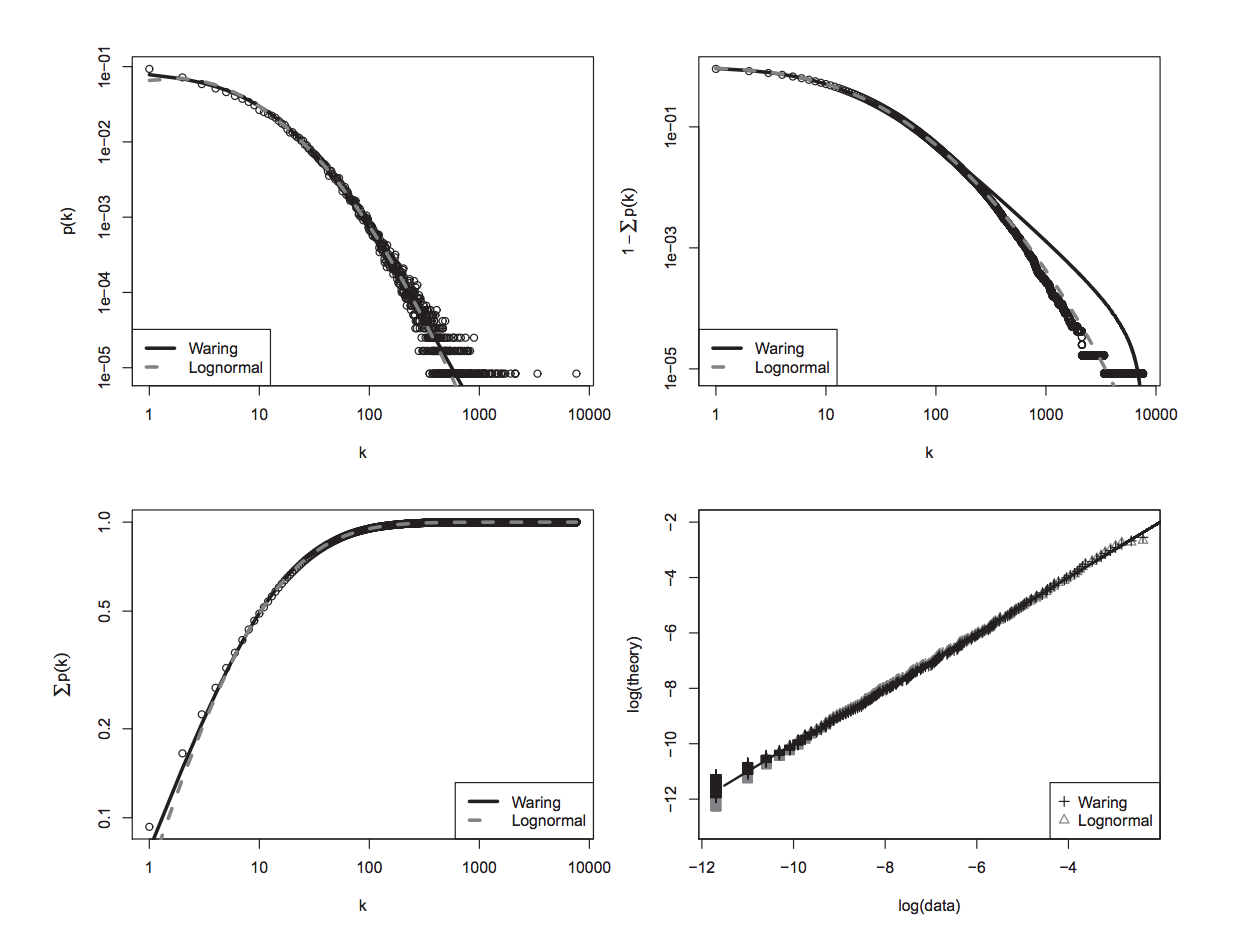The size of patent categories: USPTO 1976-2006
Image for the paper "The size of patent categories: USPTO 1976-2006"
NU-MERIT Working Paper Series 60, 1 (2014)
















Categorization is an important phenomenon in science and society, and classification systems reflect the mesoscale organization of knowledge. The Yule-Simon-Naranan model, which assumes exponential growth of the number of categories and exponential growth of individual categories predicts a power law (Pareto) size distribution, and a power law size-rank relation (Zipf’s law). However, the size distribution of patent subclasses departs from a pure power law, and is shown to be closer to a shifted power law. At a higher aggregation level (patent classes), the rank-size relation deviates even more from a pure power law, and is shown to be closer to a generalized beta curve. These patterns can be explained by assuming a shifted exponential growth of individual categories to obtain a shifted power law size distribution (for subclasses), and by assuming an asymmetric logistic growth of the number of categories to obtain a generalized beta size-rank relationship (for classes). This may suggest a shift towards incremental more than radical innovation.